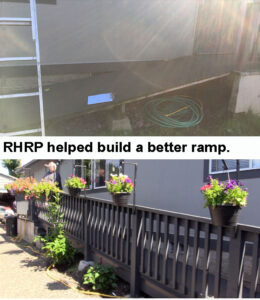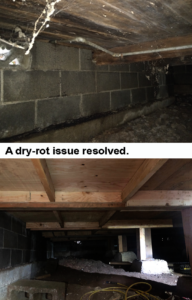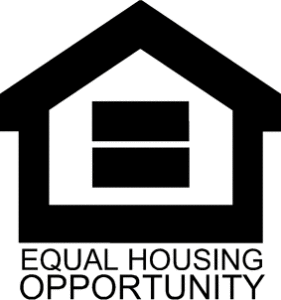RHRP made the difference for one family with a parcel “up the McKenzie.” Click to read an amazing story of restoring house and hope.
When Conventional Lenders Say, ‘No,’ RHRP Listens
 There’s good news in affordable housing or, more accurately, its preservation. Despite a recession and now a pandemic, 180 older Lane County homes have been made comfortable, energy-efficient, and safe with financial and practical help from the Rural Housing Rehabilitation Program (RHRP), administered by St. Vincent de Paul.
There’s good news in affordable housing or, more accurately, its preservation. Despite a recession and now a pandemic, 180 older Lane County homes have been made comfortable, energy-efficient, and safe with financial and practical help from the Rural Housing Rehabilitation Program (RHRP), administered by St. Vincent de Paul.
Last November, RHRP closed out a $400,000 Community Development Block Grant that allowed improvements to 15 homes in the Veneta area. The following month, the program was awarded $400,000 in CDBG funds to do more of the same in the Creswell area.
Owner-occupied by people who could not get traditional bank loans, the completed RHRP houses represent an investment of more than $3.2 million in materials, labor, and other aspects of home rehabilitation, all applied outside the Eugene-Springfield area. Additionally, 10 home rehabs are in progress.
 To find an RHRP affiliate, look no further than city hall. Every incorporated community in Lane County is an RHRP member, along with the rural county. The program was launched in 2002 by a coalition of small-city governments that received Community Development Block Grants to improve housing but lacked the resources to operate as lenders, inspectors, advisors, loan processors, and guys like that Andy Clay who shows up to help at every turn.
To find an RHRP affiliate, look no further than city hall. Every incorporated community in Lane County is an RHRP member, along with the rural county. The program was launched in 2002 by a coalition of small-city governments that received Community Development Block Grants to improve housing but lacked the resources to operate as lenders, inspectors, advisors, loan processors, and guys like that Andy Clay who shows up to help at every turn.
Program Manager Andy Clay is one of just two RHRP staff; Loan Specialist Christina Spencer is the other. Founding Director of RHRP, Anne Williams, credited them in her final words to the RHRP Policy Committee, saying, “RHRP requires a dedicated staff, and its impact has been profound.”
In addition, RHRP has worked cooperatively with other housing organizations, utilities, and lenders wherever possible, and those partnerships are stronger for it, she said. Anne Williams died unexpectedly a month later, in late February 2020.
 RHRP participants bring compelling stories of their own. They must be low-income to qualify, but the situations often transcend income to involve advanced age, disability, loss of a spouse, or plain bad luck that resulted in household damage. The goal of rehabilitating the housing translates directly for at-risk homeowners’ being able to remain in their homes.
RHRP participants bring compelling stories of their own. They must be low-income to qualify, but the situations often transcend income to involve advanced age, disability, loss of a spouse, or plain bad luck that resulted in household damage. The goal of rehabilitating the housing translates directly for at-risk homeowners’ being able to remain in their homes.
The standard RHRP loan is $25,000, with low interest (3% with an APR of 1.149%) that accrues for only seven years. No payments are due for 20 years, extendable in five-year increments. Payment is due when the property is sold or transferred. Applications to RHRP are vetted by staff, with larger requests subject to review by a loan committee of finance professionals.
The best words about RHRP come from the homeowners themselves. To celebrate the completion of one grant and the award of another, and nearly two decades of home rehabilitation, several participants allowed us in for a look. See the videos below, and this amazing story of House and Hope.

Dry rot-free now, this house also got paint and a new roof.

